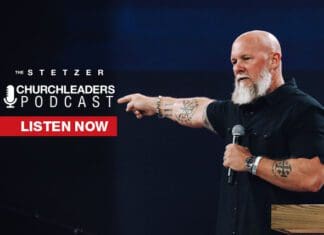What do you boast in?
Some people boast in how talented or beautiful they are. Others boast in how much they know. Some in what they own or how much they’ve accomplished. Some in how morally good they are. Some in the strength of their families.
Paul experienced some of those things, but he told the Galatians that he would never again boast about anything besides the gospel—a message that declared that Paul was such a miserable wreck that the Son of God had to endure a bloody death just to keep him out of hell (Gal. 6:14).
Paul boasted in his shame.
Paul’s boast in the gospel is like sitting in a room of millionaires and boasting about your collection of food stamps.
My family loves the comedian Brian Regan. Almost every family night includes us watching one of his sketches. One of our favorites is about the “Me Monster.” You know, the guy at the party who manages to turn the focus of every conversation toward himself. No matter what you’ve done, he’s done something better.
Brian wishes he had the chance to walk on the moon because then, he says, he’d always have a retort for the me-monster. “Oh yeah, well I walked on the moon.” Because, you know, nothing beats walking on the moon.
Paul believes there is something even better than that, however. And it is exactly the opposite of the me-monster boast.
He says, “I’ve been given the riches of Christ, sonship in heaven, the gift of the Holy Spirit and the promise that goodness and mercy will now follow me all the days of my life. And I deserved none of it. God gave me these things just because he loved me.”
The gospel, for Paul, is the ultimate dinner story boast.
It’s the only true humble brag. And one anyone can participate in.
Paul knew that the power found in the gospel was his only hope. Paul knew he didn’t have the resources to live the Christian life, much less fulfill the mission God had given him to take the gospel to the Gentiles! Paul says that in Jesus we have all the wisdom and power we need to do whatever it is that God has called us to do. That’s why he was comfortable being weak, overlooked, and despised. He was even enthusiastic about his suffering and his weaknesses if they meant being able to lean more into Christ (1 Cor 1:20–31; Col 1:24).
Do your insecurities and inadequacies push you deeper into gospel hope?
Or do your sufferings and weaknesses drive you further away from the gospel?
Perhaps you know the gospel, you just don’t boast in it. It’s not where you turn to assure yourself the future will be okay. It’s not the possession you are most excited to carry into tomorrow.
Paul says it must be—if you want the joy and confidence that characterizes those who turn the world upside down!
Paul rejoices that in the gospel we have the ultimate possession (the fullness of God), have experienced the ultimate love (at the cross), received the ultimate victory (deliverance from sin and death) and possess the ultimate assurance (Jesus now sits at the right hand of God controlling all things for my good). What more is there to boast in? Where else would we turn?
Martin Luther understood this.
One Little Word
The German Protestant reformer may not have seen Jesus with his eyes like Paul did, but he did catch the same life-altering vision of the gospel. In the gospel, Luther found the resources for assurance in his own relationship with God. He also found the resources to awaken an exhausted, floundering, and defeated medieval church. Luther described his discovery of the gospel like a man falling down the shaft of a bell-tower and reaching out in desperation for the only rope available. As he grabbed it, he said, it not only broke his fall, it rang the bell and woke up half of Germany.
Something similar happens to all those who find the gospel.

















